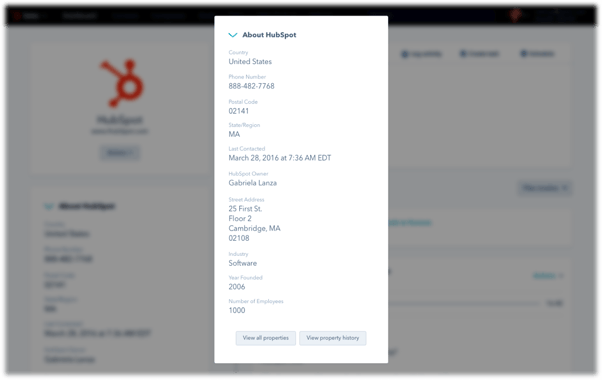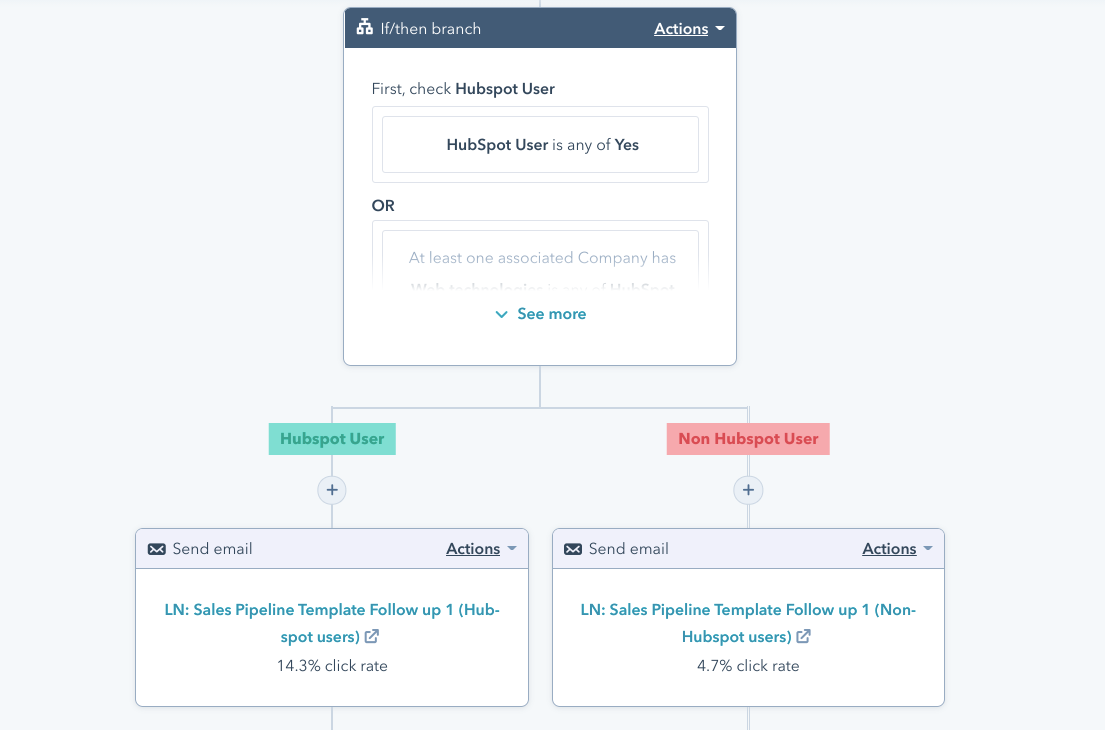Let’s paint a picture. You own a small business and you’re looking for a new software tool to help you manage your inventory. You do a bit of Googling and come across three companies who you think could help.
You visit each company’s website, read a blog post, and decide to sign up for their mailing list to learn more about what they offer.
Company One immediately emails you asking if you want to book a call with one of their salespeople. When you don’t reply, you receive a series of pushy emails telling you how amazing they are. You can’t hit the unsubscribe button fast enough!
Company Two doesn’t bother you like that… In fact, they barely email you at all. You sometimes get automated messages about a new blog post, but they’re not really relevant to you. You stick around for a few weeks and then unsubscribe.
Company Three gives you value right off the bat. They send a few helpful resources, then a simple questionnaire that asks what you’re looking for. You don’t mind answering because they haven’t scared you off! You keep getting emails that are more and more personalized, and when a salesperson reaches out and asks if they can help, you’re actually excited to book the call.
What’s the lesson here? Building a business relationship is the same as starting a friendship: if it’s going to go anywhere, you need to build trust.
Building Trust as an Organization
Customers don’t buy from someone they don’t trust. Even if you offer the best services on the planet, you need to make them feel at ease with your business so they can start to know, like, and trust you.
You need to be like Company Three. You want every customer to feel like they are your whole world: that every message you send is tailored to them and their unique needs.
Nothing turns off a potential customer like irrelevant content. Every interaction should build off the one before it and it should always (and we mean ALWAYS!) be hyper-relevant to their questions and concerns.
But let’s be honest: you DON’T have all the time in the world. You might have leads coming at you from every direction and very little time to spend getting to know them. That’s why HubSpot defines creating trust as “building personalized relationships at scale”. With some careful set-up and segmenting, you can make your potential customers feel seen and heard… even when there’s not actually a human behind the screen.
Building Trust in HubSpot: Using the Contact Database
Your HubSpot contact database is your key to personalizing messages without coming across as pushy, clueless, or downright creepy.
A new contact is automatically created every time someone fills out a new form on your website. It keeps track of what pages they view and what emails they receive so you don’t have to! And thanks to HubSpot Insights, you can automatically pull in business information. You’ll know their company size, industry, and more... without clogging up your forms with a million extra questions!

Inside the database you can filter and segment to your heart’s delight. Build lists of people who didn’t open your last email, who visited your sales page five times in one day, or who recently cancelled a sales call. And think: how can you help the person in each scenario make a decision?
Building Trust in HubSpot: Setting Up Custom Properties
Standard contact properties like first name and phone number are a great start, but they might not be enough for the work you do. What if you need to know someone’s revenue targets, their current supplier, or even their favorite color?
Custom properties come to the rescue!
You can collect virtually any piece of information about your customers by adding new custom properties to your lead forms. Let users fill in their own responses in a text field or give them a few options to choose from.
Not using lead forms? Update custom properties manually as you speak with prospects or set up a workflow to fill them in automatically. Soon you’ll have the perfect picture of who your customers are, what they need, and how you can help!
Building Trust in HubSpot: Putting it All Together
You’ve learned everything you can about your customers. Now it’s time to put your knowledge in action and use it to build trust.
Tip #1: Personalize, personalize, personalize
An email needs more than “Hi [first name]!” to be relevant. Take advantage of HubSpot’s custom fields to insert a contact’s company name, biggest struggle, or birthday in an email. With the right properties sprinkled in, contacts will hardly believe that the message was sent to a list! If you’re feeling stuck, check out this blog post on 11 email personalization ideas.
You can even personalize your landing pages based on someone’s location or how they found you. Try to think from the customer’s perspective and only ask questions that are absolutely necessary. It doesn’t feel very trustworthy when you have to tell your life’s story just to download a whitepaper!
On the other hand, if the contact comes back and fills out a second form, don’t collect the same basic information twice. With HubSpot’s progressive profiling, you can ask questions over time to build up a contact’s information without overwhelming them.

Tip #2: Segment your email campaigns
If you’re still sending out the exact same email to your entire list, please do us a favor: stop. Stop immediately!
Your business might only need two segments, or it might need twenty. But no matter your list size, we guarantee that the same message won’t be relevant to everyone on it.
Some prospects might need a gentle nudge in the right direction. Others would probably buy immediately if you only asked. In both cases, the wrong type of email will get ignored, or worse, cause that dreaded unsubscribe.

Put yourself in the customer’s shoes: they don’t care about how amazing you are, even if it’s true! (If in doubt, just ask yourself: What customer-first strategies can I learn from Taylor Swift?) They just want to know how you can help them. A personalized, relevant message will make it easy for them to see choosing you as the obvious next step.
Tip #3: Smarketing in action
What’s the best kind of data? Data you actually use, of course! Don’t leave sales out of the picture when you’re deciding what to do with all your new, exciting data.
You can use customer data to determine the best time to reach out: for example, catch them when you’re on their mind by sending an email right after they view your sales page or click on a document!
Once they’re on the phone, you can speak directly to each customer’s situation just by having a quick look at their contact record. What’s more trustworthy than someone who knows exactly what you need and can help you get there faster?
If your prospects hate picking up the phone, HubSpot still has you covered. Their robust live chat feature brings marketing and sales together and shows customers that your team is always standing by to help. Trust is built on (real, not robotic) communication, after all! Questions about live chat? Learn more in HubSpot Conversations: An Introduction to Live Chat.
When it comes to building trust for businesses, it’s hard to do better than HubSpot. The beauty of the platform is in its robust contact database, its custom properties, and the incredible segmentation options.
Having trouble with your contact database or properties? Wondering how to set up that sweet, sweet segmented email sequence? Get in touch and earn your customer’s trust faster by connecting with the pros at Horseshoe & Co.



